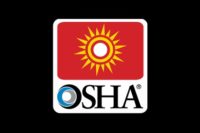Online tools help workers avoid heat-related illness

When employees need to work in hot environments or are exposed to extreme heat, they are at risk from heat stress. In other contexts, stress describes forces acting on an object, exerting pressure or tension. The same definition applies to heat stress in occupational settings. When a worker is exposed to heat hazards on the job, the body has to work harder to maintain a normal temperature and is at greater risk of developing a heat-related illness.
Heat-related illnesses such as heat stroke and heat exhaustion can be deadly or debilitating. Other illnesses such as heat cramps and heat rash are painful conditions that can increase a worker’s risk of injury.
Need to be mindful
Many variables affect the likelihood of a worker developing a heat-related disorder, including the type of work the employee is doing and how strenuous the work is, along with the air temperature, humidity level, air movement, and more. In addition, a worker’s own physical fitness, fatigue, health, and experience can all play a role in that person’s risk of experiencing heat stress.
Helping employees avoid heat-related disorders requires employers to keep track of these variables and monitor the workplace and the environment.
Preventing heat-related injuries involves awareness, planning, and scheduling. In addition, proper monitoring may require the use of complex formulas or models. Who couldn’t use a little help in implementing their heat illness prevention program?
Employers looking for a little extra assistance can turn to technology for help. Several online tools and apps can provide heat safety information when and where you need it.
OSHA’s heat safety tool app
OSHA’s heat app, available for android and iPhones, is intended for both employers and employees. It uses the phone’s location to display the current temperature and humidity and calculate the heat index for the worksite. A Spanish language version of the app is also available.
Based on the National Weather Service heat index, the app displays the risk level to employees and suggests measures to protect workers, including information on:
- Drinking adequate fluids;
- Scheduling rest breaks;
- Planning for emergencies;
- Adjusting work operations for the level of heat;
- Acclimatizing workers;
- Recognizing heat illness signs and symptoms; and
- Monitoring coworkers and employees for signs and symptoms of heat-related illness; and
- Providing first aid and summoning medical assistance.
Since its debut in 2011, OSHA says there have been more than 356,000 downloads of the app, with its popularity growing from 58,715 downloads in 2011-2012 to 96,618 downloads in 2016.
Pros: OSHA updates the app every few months to improve the tool. In 2015, OSHA modernized the layout and improved accessibility. Last year, the agency partnered with the National Institute of Occupational Safety and Health (NIOSH) to incorporate recent guidance on heat stress and hot environments. OSHA says it is now collaborating with NIOSH on the heat app, and NIOSH will take over ownership of the app soon.
Cons: OSHA’s heat app is only designed for outdoor use.
The National Weather Service’s Heat Index and Weather Prediction Center
The National Weather Service (NWS) developed the heat index as a “feels-like” measure of relative humidity in addition to air temperature. The NWS offers a Heat Index Calculator that uses employers’ site-specific inputs. Along with the heat index, the NWS offers several tools to help OSHA and employers prepare for heat events, including color-coded maps with predictions and analysis, long-range heat index forecasts, and the NWS Heat Index Chart. The chart allows employers to predict the likelihood of heat disorders.
Pros: The heat index provides an up-to-the-minute snapshot of current conditions.
Cons: These tools rely on employers entering the correct variables. In addition, the heat index calculation may produce meaningless results for temperatures and dewpoints outside the set points of the Heat Index Chart.
Wetbulb Globe Temperature calculator (prototype)
The NWS is developing a tool to aid employers in calculating the wetbulb globe temperature (WBGT), a widely accepted measurement of heat stress. Currently, measuring the WBGT requires specialized instruments such as a black globe thermometer, a wet-bulb thermometer, and a dry-bulb thermometer. In addition, employers must accurately enter the correct values and figures to calculate the WBGT.
The NWS tool will account for temperature, humidity, wind speed, sun angle, and cloud cover to quickly calculate the heat index and WGBT for a particular location.
Pros: This tool takes the work out of complicated computations.
Cons: Still in development, the tool has not yet been released for operational use. In addition, the NWS tool is intended for use in direct sunlight, which may limit its uses.
Wireless emergency alerts
You can sign up to receive Wireless Emergency Alerts (WEAs) as text messages from federal and state public safety agencies. Note that these are not just warnings about heat emergencies, but include other extreme weather warnings (e.g., tornadoes, floods), evacuation alerts or directions on immediate action, AMBER alerts, and presidential alerts during times of national emergency. WEAs are official messages sent by authorized government alerting authorities.
Pros: These services offer real-time warnings to help you react to ongoing events.
Cons: Alerts may include a wide range of warnings that do not apply to your business.
There are many other weather- and heat-related tools available for your tablet or smartphone. Just remember that they are only intended to supplement your written heat safety program, and should not substitute for it.
Finally, while no specific federal standard covers occupational exposure to heat, OSHA can cite employers for exposing employees to heat hazards using the General Duty Clause, which requires employers to provide a place of employment which is free from recognized hazards that are causing or are likely to cause death or serious physical harm to employees.
Looking for a reprint of this article?
From high-res PDFs to custom plaques, order your copy today!






